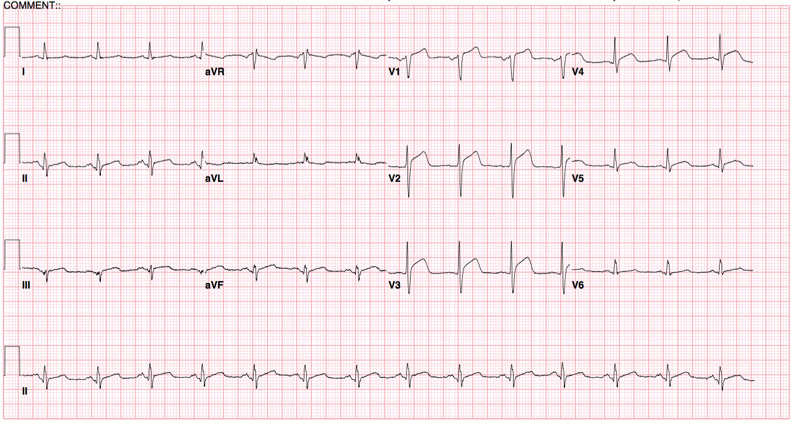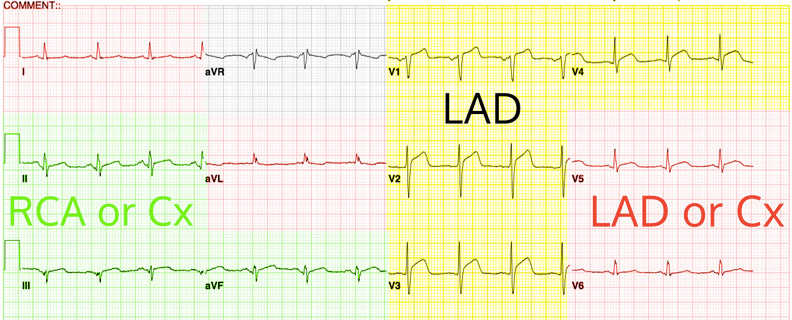The patient is a 56 y/o female who presents with sudden onset substernal chest pain associated with dyspnea and some diaphoresis. Vitals stable. An initial ECG was obtained.

Cardiology was emergently consulted, but there was some suspicion that the ECG changes noted were merely J-Point elevation. A bedside echocardiogram was subsequently performed:

Answer: Septal Ischemia, Regional Wall Motion Abnormality
This bedside echocardiogram demonstrates no effusion, and no evidence of RV dilation or failure. There is, however, noted hypokinesis of the LV apex and apical septum consistent with LAD territory ischemia. This patient was taken to the cardiac catheterization lab where she was found to have a 100% LAD occlusion that successfully recannulated, and a drug eluding stent was placed.
- Persistent ischemic symptoms in the setting of nonspecific ECGs changes warrant a bedside echocardiogram to evaluate for regional wall motion abnormalities, with particular attention paid to the abnormal ECG vascular territory:

- In general, a wall can be considered to be hypokenetic if it thickens less than 30%.1
- Hypokinesis can be caused by a number of different etiologies, including active ischemia, scar from a previous MI, or virtually any other cause of cardiomypathy.
- A simplified method to divide the heart into segments that correlate to specific coronary vascular territories has been suggested by Lang et al2 focusing on the distribution of the right coronary artery (RCA), left anterior descending artery (LAD) and the circumflex artery (CX).
- Emergency physicians can be trained to identify these lesions with good accuracy. A study by Kerwin et al found that after a brief, 30 minute training module, median percentages correct improved from 67% to 87% when reviewing pre-recorded clips.3
- Otto CM. Textbook of Clinical Echocardiography, Expert Consult – Online and Print. Elsevier Health Sciences; 2013. [Google Book]
- Lang RM, Bierig M, Devereux RB, et al. Recommendations for chamber quantification: a report from the American Society of Echocardiography’s Guidelines and Standards Committee and the Chamber Quantification Writing Group, developed in conjunction with the European Association of Echocardiography, a branch of the European Society of Cardiology. J Am Soc Echocardiogr. 2005;18:(12)1440-63. [pubmed]
- Kerwin C, Tommaso L, Kulstad E. A brief training module improves recognition of echocardiographic wall-motion abnormalities by emergency medicine physicians. Emerg Med Int. 2011;2011:483242. [pubmed]




